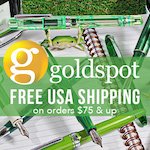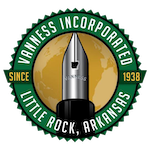One of the benefits of attending a pen show is seeing new products in person for the first time. I had never heard of Callifolio ink prior to seeing Lisa Vanness from Vanness Pens at the Atlanta show. She came up to me with two sheets of ink swabs and said "pick one!" I must have stared at those sheets for about 10 minutes - talk about an impossible task!
Callifolio ink comes from L'Artisan Pastellier and chemist Didier Boinnard, who specializes in using natural pigments in creating their lineup of products. And what a lineup it is.
When Lisa laid out the swab samples in front of me two things stood out: One, there were no eye-searing bright colors, and two, there were an enormous number of blues. Since blues are kind of my thing I went that route with the sample bottle that Lisa gave me. After much hemming and hawing, Baikal came home with me, and I must say it was an excellent choice.
Named, assumedly, for Lake Baikal in Russia, the blue in this ink is hard to pin a description on. I wanted to call it a dusty blue at first, but it's a little darker than what I consider dusty. Denim is likely a better term, but hints of purple peek through from time to time. What stuck with me the most is the mix ink I call Scabix (seen in this review), which is a 1:1 mix of Rohrer & Klingner Scabiosa and Salix. Scabix is more purple, but the feel of the color is right, and very complimentary.
Mixing inks is worth mentioning here because Callifolio inks are able to be mixed at will. These non-toxic and non-corrosive inks are made to be tame and work with all types of pens. They aren't waterproof or permanent because of this, but that makes them easy to use and clean.
Callifolio is available to be purchase in either 40 ml triangular bottle (same as Diamine 150th) for $11 or in 50 ml pouches for $8 that you can use to refill your own ink bottle. And by your own ink bottle, I mean like the fancy Nock Co. logo bottle that Lisa made for me and Jeff, seen below. These prices make testing out Callifolio a no-brainer, and a worthwhile addition to your ink stash.
My thanks to Lisa and Vanness Pens for providing these goods at no charge for review purposes.


























